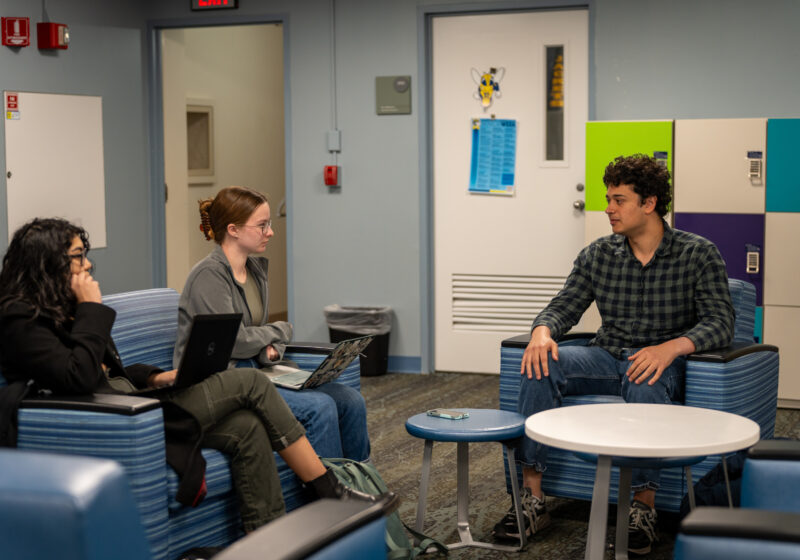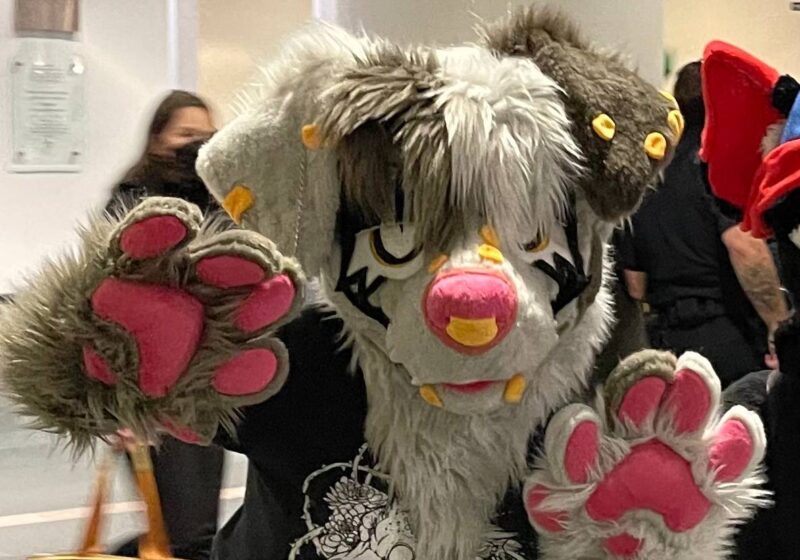As University vice president and general secretary, Paul Burgett serves as the senior adviser to the president, and he has been influential in the execution of the current Strategic Plan. Burgett, who also has a faculty appointment to the music department, sat down with the Campus Times to answer questions about UR’s major initiatives as well as the Eastman School of Music, where he received his three degrees and formerly served as dean of students.
How did you come to be UR’s vice president?
Thomas Jackson, who was President Seligman’s predecessor, came to me and said, ‘I’ve got two vice presidents who’ve left. I’ve assigned some of the responsibilities in each of those offices to other people. But I really need someone who knows the trustees and who the trustees know, who knows the Rochester community very well, who knows student life and the University very well, who’s been around for a while and can advise me on a whole array of issues. And would you be interested in doing that?”
Let’s jump into the Strategic Plan. What were the major initiatives starting with President Seligman’s arrival? Give us the timetable of where we are and where we are going.
President Seligman, believe it or not, is in his fifth year as president, which is just sort of startling to me. On [his] very first day, July 1, in the press conference, he said, ‘The campaign for Rochester begins today.” Now that’s a huge mouthful, a very big statement.
The campaign for Rochester has several components. Strategic planning is the first component. So what the president did, was he set the deans of all of our schools and their faculty to the task of creating a plan that looks forward for at least five to 10 years out.
Last October, the Board of Trustees approved the plans that each of the schools had been engaged in.
The plans determine what the priorities are, so you talk about where you see yourself going and what it’s going to take to get you there. And what it’s going to take to get you there is human resources, physical resources like buildings, for example all of which require financial resources.
There’s clearly dollars associated with that, so part of the Seligman era will be the raising of money. You’re always in a fundraising mode if you are not, something is wrong.
How are we securing that funding?
We’ve experienced a lot of success in our early fundraising efforts. The George Eastman circle is very important as part of the funding base. For example, I am a member of the George Eastman Circle and I am a charter member of the George Eastman circle.
Now what does that mean? In order to be a member of the George Eastman circle, you pledge $1,500 a year for five years. That’s the entry level for being a charter member.
Anyone who pledges this will be a member of the George Eastman circle so we are continuing to try to add to that. It is very, very important for us, like our peer institutions, to develop a base of support, people who have confidence in what we are doing and that’s really important. People who have confidence in what we are doing and among those, people who are willing to match their confidence with their financial support.
What is the biggest issue that UR faces, both on the River Campus and at Eastman?
I think that there’s an atmosphere of opportunity that I see happening in the University that I’ve never seen before. That’s not bad. It’s an issue, but it’s a really good issue. For example, when I was a student, I didn’t know that Eastman was part of the University of Rochester. I had to ask that question once I got here.
Today it’s a very different situation. We’ve got a fertile exchange of Eastman students coming over here. I don’t know if this is right, but the order of magnitude is right: about 50 to 60 Eastman students taking classes over here and 250 College students are taking lessons downtown. That to me is just astonishing.
I was president of the Students’ Association at Eastman in my senior year, and we got the first shuttle bus to go back and forth, and I’ll never forget taking the shuttle bus over here, just a couple of us students. And we got off the bus, and we didn’t know anybody and we got back on the bus and we went back.
The difference between then and now is just monumental between the exchange going back and forth.
Could you describe what interdisciplinary initiatives are currently happening?
What’s really interesting to me is the ways in which faculty and students are capitalizing on opportunities, the way they are thinking about it. You mention issues between the College and the Eastman School. I would [also] toss into that the Medical Center.
There are conversations now that are going on now at the academic level that never went on before. You’ve got Eastman faculty that are over here spending time in engineering.
There are academic initiatives which are underway that are really very promising and because we’ve got one of, if not the greatest, music schools on the planet; why shouldn’t we be using those resources to enhance the experience of students throughout the University? So I see that going on at the academic level.
On the nonacademic level?
Last week, I hosted a dinner for the Leadership of Undergrads so it was Eric [Weissmann] and Brittany [Crowley] and [Experience Eastman Coordinator] Ben Pollack with the president and the vice president of the Eastman Students’ Association so they could talk together about initiatives that could bring Eastman students and students in the College closer together.
And you’ve got to work at it like crazy, you’ve got to work at it continuously because we’re separated by three-and-a-half miles. It’s an uphill battle and we claim our successes in micro-interactions, but that’s better than none at all.
And it’s really reassuring to me to see that the student leadership is really working on ways to enrich each other’s lives.
Will you continue to be an integral part of the Experience Eastman initiative?
I have made the offer. I have told the students that. First of all, they’ve got my moral support; buying dinner to bring people together is easy, and providing some historical perspective, I am happy to do that.
Part of that historical perspective is encouraging people not to be disappointed. It’s easy to be disappointed when you don’t hit a home run every time you step up to the plate. But the successes are successes that they have to measure in small triumphs. Because we are not going to change the Eastman culture and we’re not going to change this culture in a way that might give everyone what they wanted.
You’ve got to look at incentives. What’s the incentive to get students back and forth? Well, on the Eastman end of it, there’s one really powerful incentive: an audience. What Eastman students want is an audience. There’s nothing more demoralizing than for the orchestra to walk out on to the stage of the Eastman Theatre and see 60 people sitting there. They’d like to see 1,000 people there. Well, the [River Campus has] got 1,000 people and more, and there’s some of them who would like to go to a concert. So by what mechanism do we create the incentive for our students here to go over there? Leave aside the money, the money’s just buses that’s not a big deal. That shouldn’t stop us.
So those are the kind of conversations we had. Even if we put 500 students in there, that dresses the house in a way that you feel like somebody’s listening to what you are doing.
What’s one question that you’d like us to ask you?
Ask me to maybe say something in my confidence about the University of Rochester’s future going forward.
Could you say something about your confidence in the University of Rochester’s future going forward?
The University has been around for 159 years. And, occasionally, because
my perspective is only what it is, I can forget that and let myself fall into the trap of thinking that the sky is falling the Chicken Little syndrome. For instance, this most recent, horrible economic crisis.
What does that mean for the American economy? What does that mean for us as a nation? What does that mean for us here at the University?
And as I look at how we’ve come through it to the point that we have, we have sort of glided through this crisis, continuing to do what we do very well with barely a hiccup. The President decided that a priority was a preservation of human resources; keep jobs. The President asked everyone who earned above $40,000 a year that we would freeze the salaries. I didn’t hear a peep from anybody about that.
Our response to the crisis was smart, it was compassionate and it gave me the perspective. All kinds of institutions rise and fall, but there are two who, historically, over thousands of years, survived. The church is one and the University is the other.
I’ve taken great comfort in the realization that we are a durable institution.
My confidence on the basis of the evidence that I have is really high.
Brenneman is a Take Five Scholar.
Willis is a member of the class of 2011.


